The New "It" Veggies and How to Eat Them
Here are the new stars of the produce aisle that you've got to try this year.
By Lynn Andriani
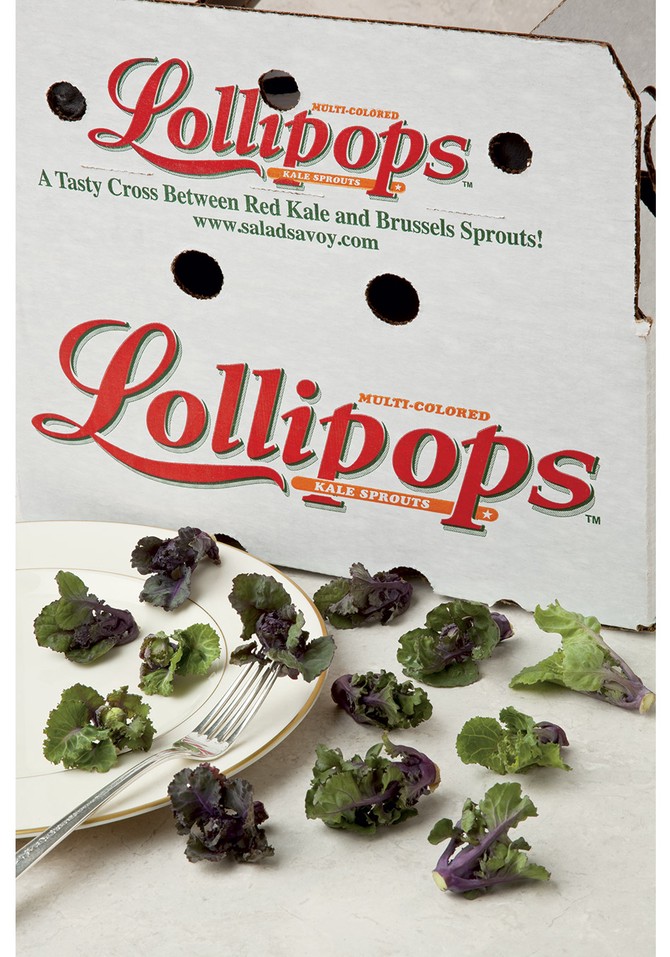
Photo: Courtesy of Salad Savoy
Kale Sprouts
What they are: A mash-up of kale and brussels sprouts, also known as lollipop kale.
The backstory: A UK seed company developed the hybrid, calling it Flower Sprouts a few years ago, and it's since entered the American market, with one farm nicknaming the sprouts "lollipops." They're high in vitamins B6 and C.
How to eat them: Sautéed, steamed or stir-fried; they're also great in pesto (blanch them first in boiling salted water, then blend with basil, garlic and olive oil).
The backstory: A UK seed company developed the hybrid, calling it Flower Sprouts a few years ago, and it's since entered the American market, with one farm nicknaming the sprouts "lollipops." They're high in vitamins B6 and C.
How to eat them: Sautéed, steamed or stir-fried; they're also great in pesto (blanch them first in boiling salted water, then blend with basil, garlic and olive oil).
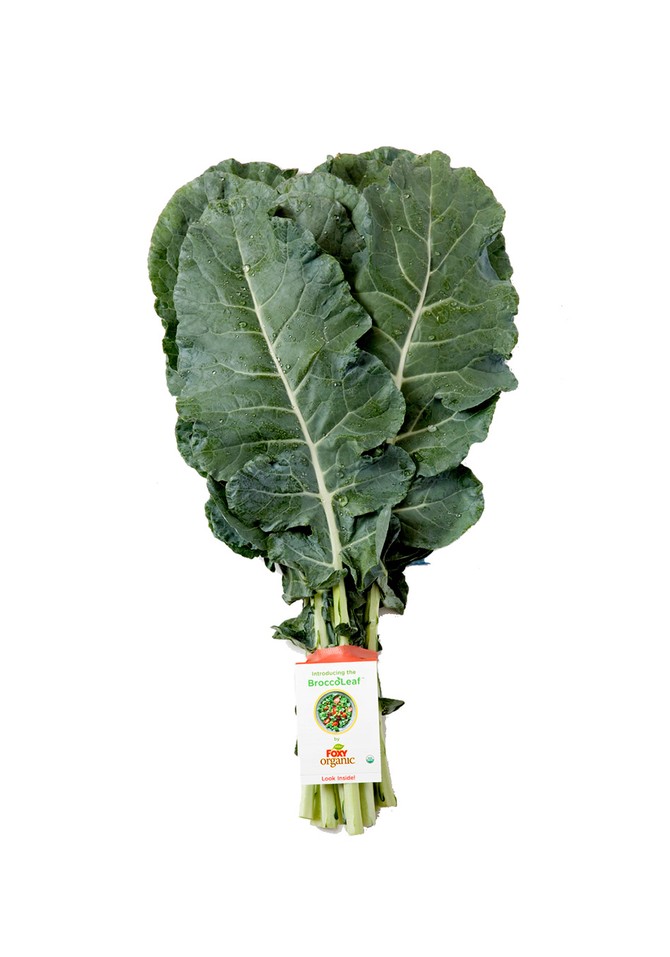
Photo: Courtesy of Foxy
BroccoLeaf
What they are: The leaves of the broccoli plant.
The backstory: The leaves from the broccoli plant are usually plucked off and discarded, but it turns out that they're actually sweet-tasting, with a sugar-snap-pea-like flavor, and are an excellent source of calcium, folate, vitamin C and the other vitamins and minerals you typically find in broccoli.
How to eat them: Sautéed, pureed in a smoothie or raw and chopped in a salad.
The backstory: The leaves from the broccoli plant are usually plucked off and discarded, but it turns out that they're actually sweet-tasting, with a sugar-snap-pea-like flavor, and are an excellent source of calcium, folate, vitamin C and the other vitamins and minerals you typically find in broccoli.
How to eat them: Sautéed, pureed in a smoothie or raw and chopped in a salad.
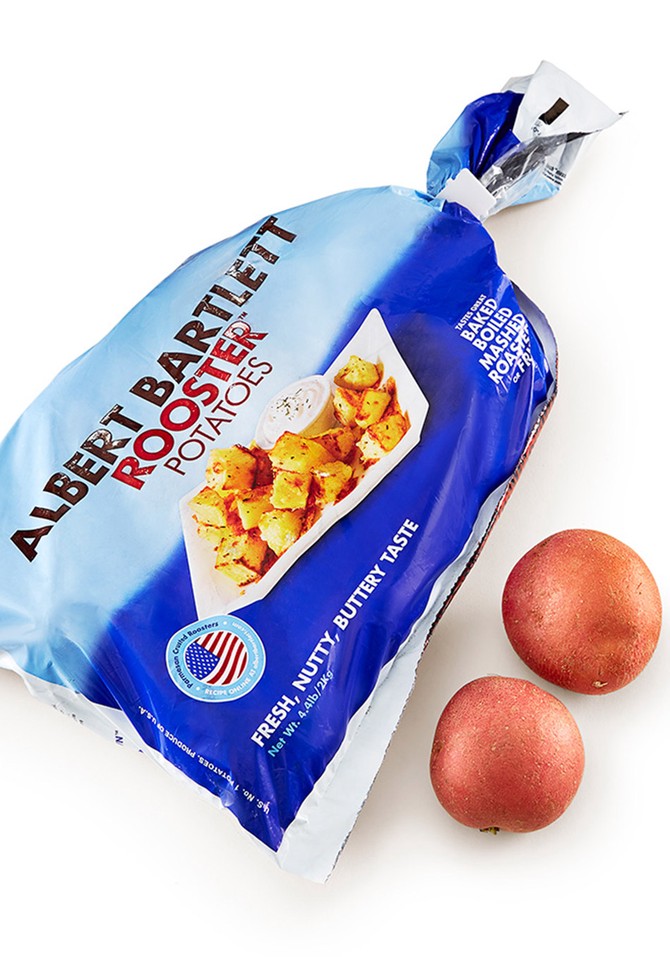
Photo: Courtesy of FreshDirect
Rooster Potatoes
What they are: Larger than new potatoes but smaller than Idaho, they're spuds with pink skins that turn golden brown when baked and crisp up better than any potato we've ever tried, with a light-yellow, fluffy inside.
The backstory: Like kale sprouts, Roosters got their start in Britain; one of the country's potato-farming families found that people loved the spud's nutty, buttery taste so much, they brought them to the U.S.
How to eat them: Roasted, mashed or even grilled (slice them into rounds; coat with oil, salt and pepper; grill 5 minutes per side).
The backstory: Like kale sprouts, Roosters got their start in Britain; one of the country's potato-farming families found that people loved the spud's nutty, buttery taste so much, they brought them to the U.S.
How to eat them: Roasted, mashed or even grilled (slice them into rounds; coat with oil, salt and pepper; grill 5 minutes per side).
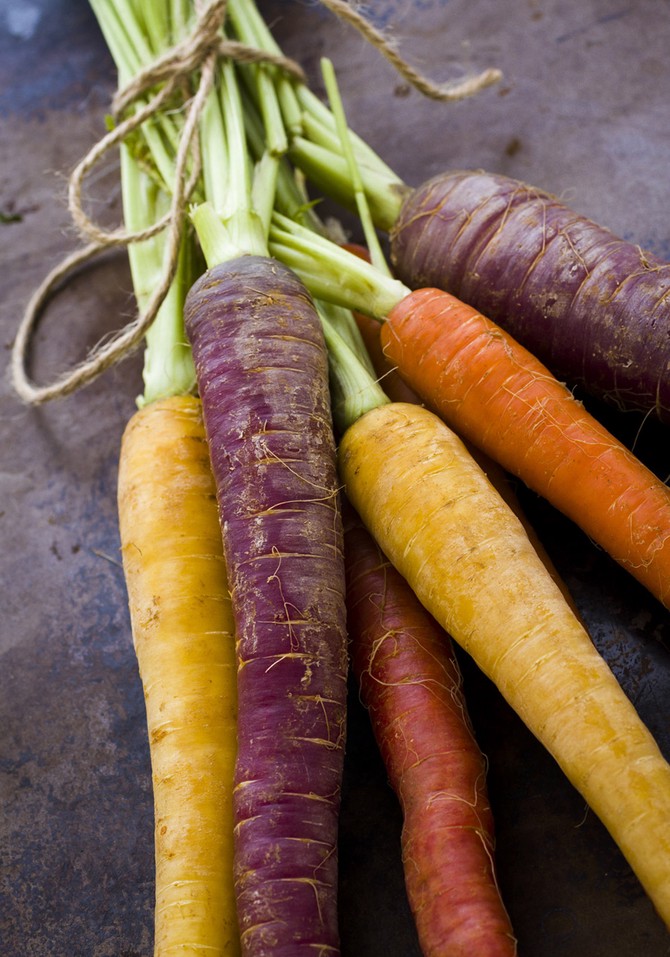
Photo: Arinahabich/Thinkstock
Rainbow Carrots
What they are: Multi-colored carrots that come in purple, red, yellow and white.
The backstory: Geneticists have been working on Skittles-toned root vegetables for years now, but they're only just becoming popular. Anthocyanin, beta- and alpha-carotene pigments are responsible for purple carrots; lycopene (found in tomatoes) and beta-carotene make them red; xanthophylls and lutein are what turns them yellow; and, high fiber is what makes them white.
How to eat them: Raw is best (as dippers or shredded in salads), since the color fades when you cook them.
The backstory: Geneticists have been working on Skittles-toned root vegetables for years now, but they're only just becoming popular. Anthocyanin, beta- and alpha-carotene pigments are responsible for purple carrots; lycopene (found in tomatoes) and beta-carotene make them red; xanthophylls and lutein are what turns them yellow; and, high fiber is what makes them white.
How to eat them: Raw is best (as dippers or shredded in salads), since the color fades when you cook them.
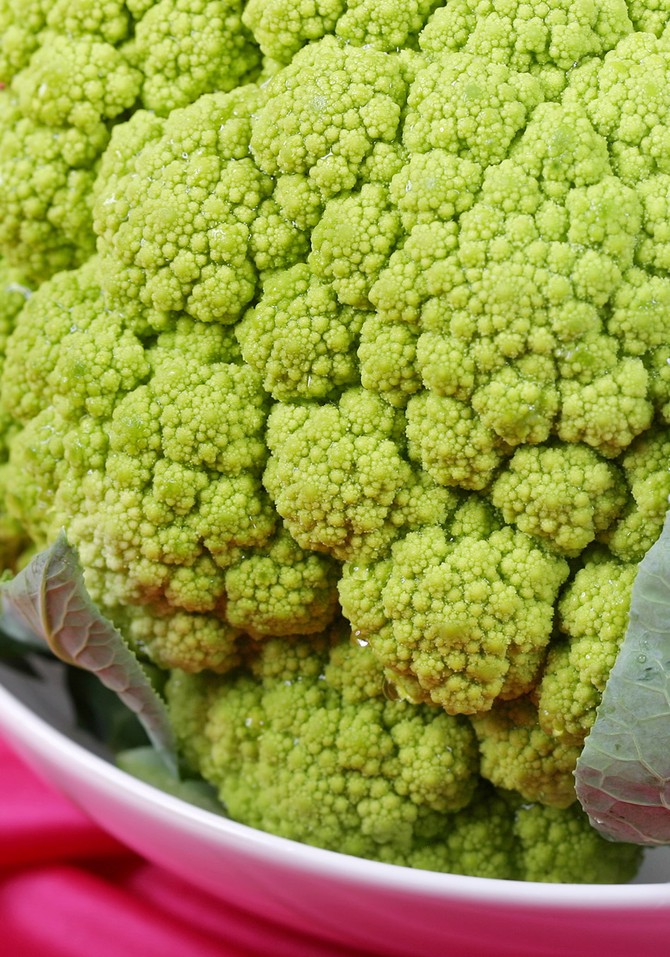
Photo: Chris Bence/Thinkstock
Broccoflower
What it is: A cross between broccoli and cauliflower.
The backstory: Broccoflower started in Italy; a California farm now cultivates so much that it's transitioned from greenmarkets to supermarkets. The heads can range in color from lime green to yellowish green, and the taste is more cauliflower than broccoli—but less crisp and dense than traditional (white) cauliflower. It has more vitamin C than oranges and more vitamin A than either broccoli or cauliflower.
How to eat it: However you like to eat cauliflower or broccoli. As with those veggies, keep in mind that the flavor is stronger when raw and milder when cooked.
The backstory: Broccoflower started in Italy; a California farm now cultivates so much that it's transitioned from greenmarkets to supermarkets. The heads can range in color from lime green to yellowish green, and the taste is more cauliflower than broccoli—but less crisp and dense than traditional (white) cauliflower. It has more vitamin C than oranges and more vitamin A than either broccoli or cauliflower.
How to eat it: However you like to eat cauliflower or broccoli. As with those veggies, keep in mind that the flavor is stronger when raw and milder when cooked.
Published 01/20/2015

